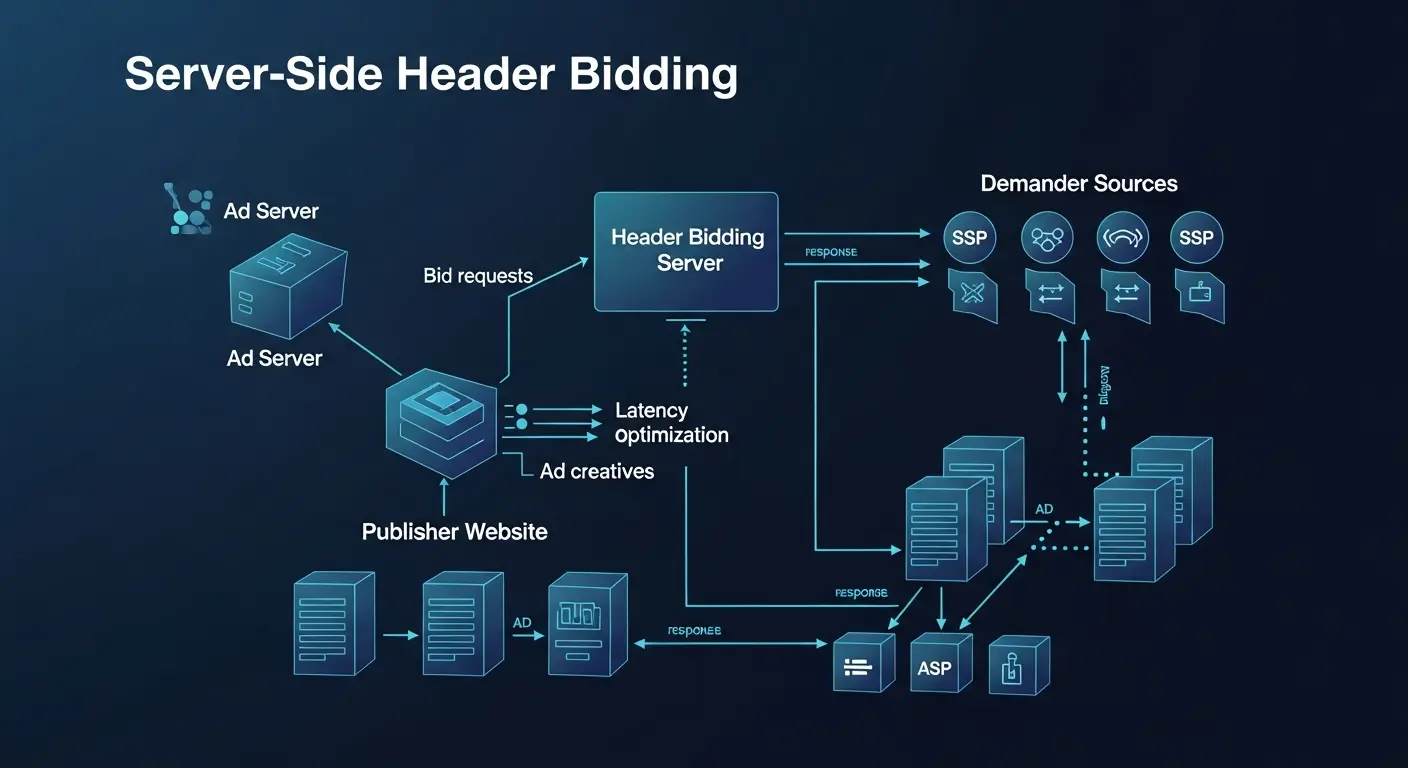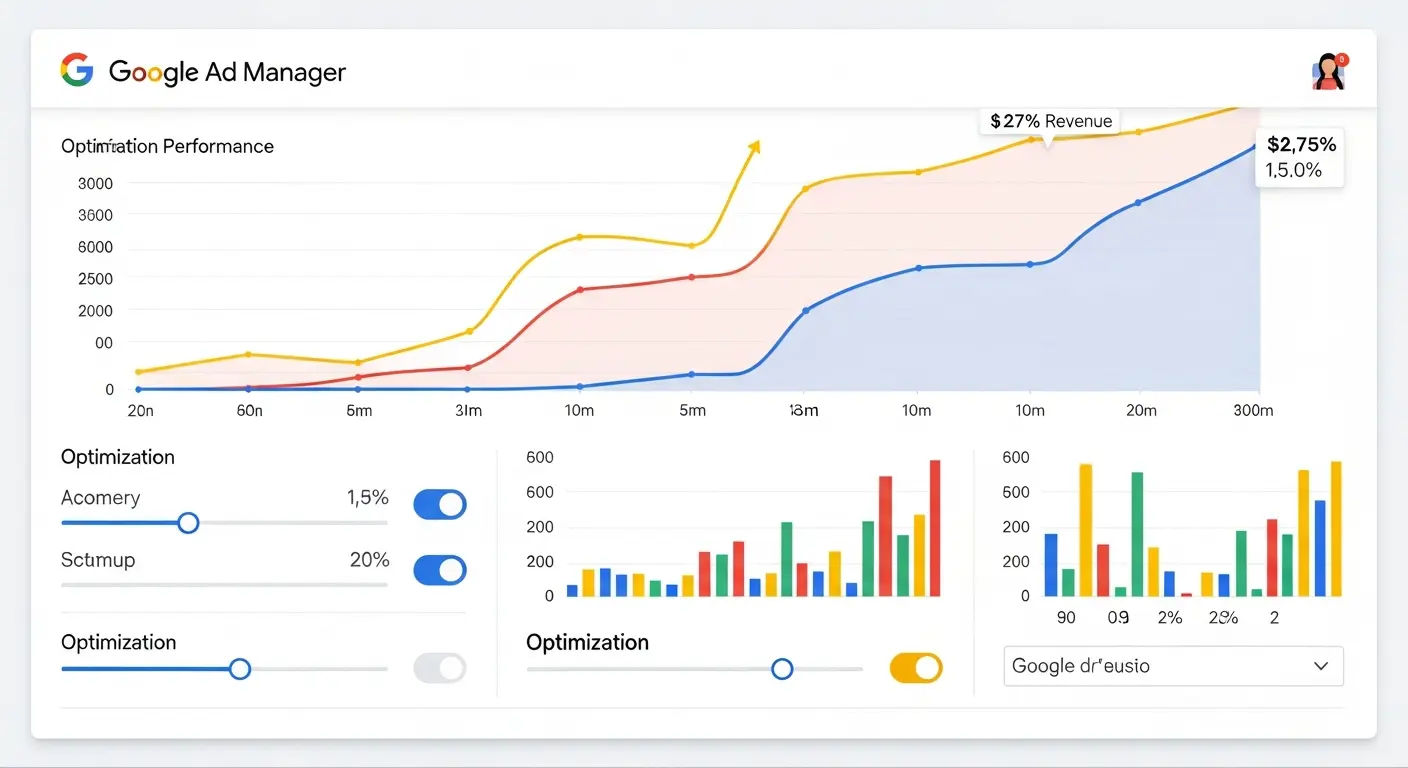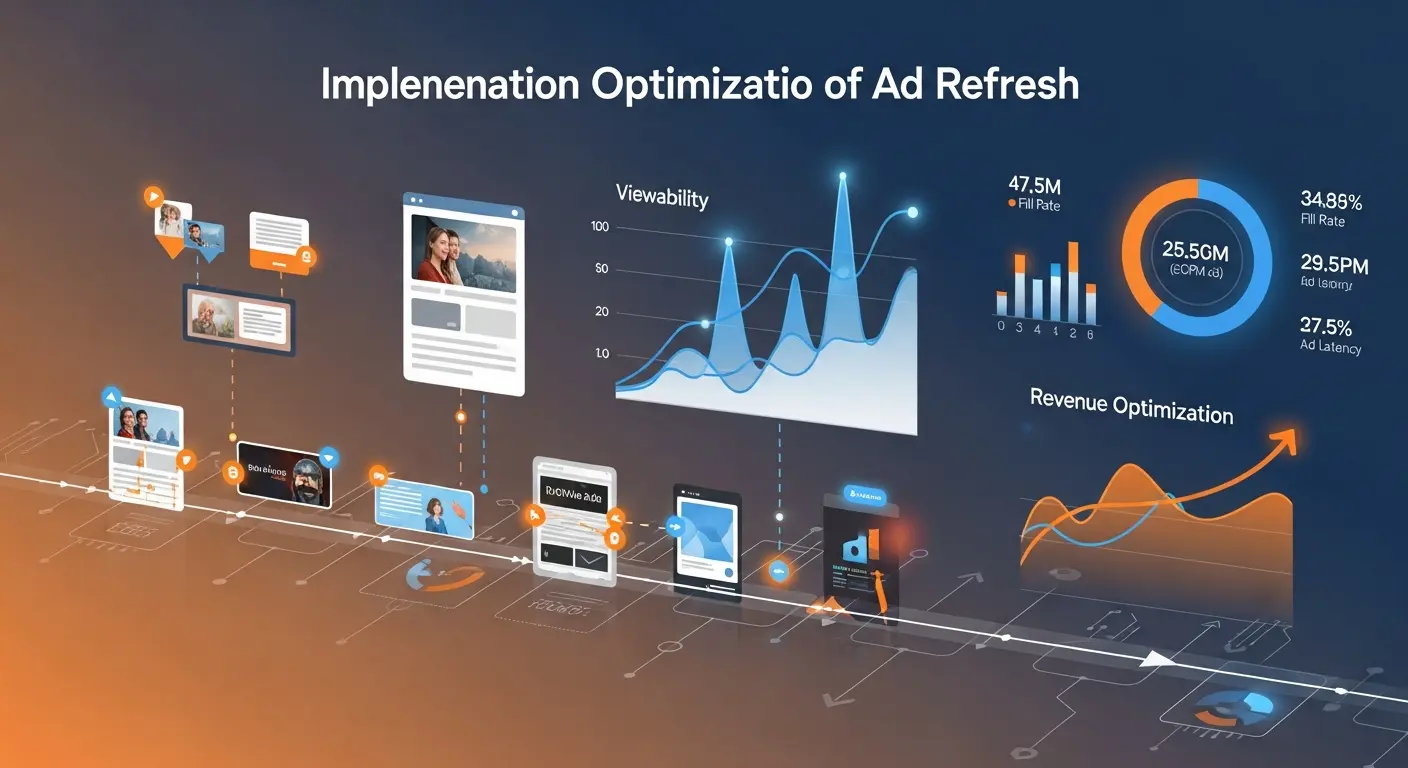Server-Side Header Bidding: Implementation and Optimization Guide
In the relentless pursuit of maximizing ad revenue, publishers are constantly navigating a complex and evolving digital advertising landscape. The rise of programmatic advertising introduced powerful tools, but also new challenges—chief among them being page latency. Client-side header bidding emerged as a groundbreaking solution, democratizing access to demand and increasing competition for every impression. However, as publishers sought to integrate more and more demand partners, the very technology designed to boost revenue began to weigh down their websites, impacting user experience and, ironically, threatening the very revenue it was meant to enhance. According to a 2023 industry report, over 70% of top publishers now use some form of header bidding, but optimizing its performance remains a key focus.
This is where Server-Side Header Bidding (SSHB) enters the stage. By moving the heavy lifting of the ad auction from the user's browser to a dedicated server, SSHB promises the best of both worlds: robust demand competition and a lightning-fast user experience. This guide will serve as your comprehensive manual for understanding, implementing, and optimizing a server-side header bidding strategy. We'll dive deep into the technical architecture, explore best practices with Prebid Server, and reveal the optimization techniques that separate top-earning publishers from the rest. Whether you're just starting to explore SSHB or looking to refine your existing setup, this article will provide the actionable insights you need to unlock your full revenue potential.
From Browser to Server: The "Why" Behind the Shift
To truly appreciate server-side header bidding, it's essential to understand the limitations of its predecessor, client-side header bidding (CSHB).
In a traditional client-side setup, a piece of JavaScript (often Prebid.js) in the user's browser makes simultaneous ad calls to multiple demand partners (SSPs). Each partner returns a bid, the header bidding library determines the winner, and that winning bid is passed to the ad server (like Google Ad Manager) for the final auction.
The Pros of Client-Side:
- Direct Access: Bidders have direct access to the user's browser, enabling better cookie matching and user identification, which often leads to higher CPMs.
- Transparency: Publishers have a clear view of the auction mechanics happening directly on the page.
The Cons of Client-Side:
- Page Latency: Every bidder added means another HTTP request from the user's browser. Browsers have a limit on concurrent connections (typically 6-8 per domain), creating a bottleneck that slows down page load times.
- Timeout Management: Juggling timeouts for numerous bidders becomes complex. A single slow bidder can delay the entire ad-serving process.
- Scalability Issues: Adding more than 8-10 bidders on the client-side can severely degrade user experience, limiting the scale of demand a publisher can integrate.
Server-Side Header Bidding was designed specifically to solve these problems. Instead of the browser making a dozen calls, it makes just one call to a server-side auction server. This server then communicates with all the demand partners on the publisher's behalf. This fundamental shift in architecture is at the core of our modern header bidding solutions.
The server runs the auction, determines the winner, and sends only the winning bid information back to the browser. This dramatically reduces the workload on the client, leading to faster page loads, a better user experience, and the ability to integrate a virtually unlimited number of demand partners without performance degradation.
The Heart of the Machine: A Deep Dive into Prebid Server
While several proprietary server-side solutions exist, the industry standard is built around the open-source Prebid framework. Prebid Server is the server-side counterpart to the widely adopted Prebid.js library, and it forms the backbone of most modern SSHB implementations.
Understanding its workflow is key to successful implementation:
-
Client Request: When a page loads, the Prebid.js library on the publisher's site sends a single, consolidated request to the Prebid Server endpoint. This request contains information about all the ad units on the page and which server-side bidders should be called.
-
Server-Side Auction: The Prebid Server receives this request and immediately sends out parallel bid requests to all the configured demand partners (SSPs and exchanges). This happens server-to-server, which is significantly faster and more efficient than browser-to-server calls.
-
Bid Responses: Demand partners respond to the Prebid Server with their bids. The server enforces a timeout to ensure slow bidders don't hold up the auction.
-
Auction Resolution & Caching: Prebid Server runs the auction among the received bids to determine the winner. The winning ad creative is temporarily stored in a connected Prebid Cache. This is a crucial step that prevents the entire creative code from having to be sent back to the client, keeping the response lightweight.
-
Targeting Keys Returned: The Prebid Server sends a lightweight response back to the client's Prebid.js library. This response doesn't contain the ad creative itself, but rather key-value pairs (e.g.,
hb_pb=2.50,hb_bidder=appnexus). -
Ad Server Call: Prebid.js passes these targeting keys into the ad request sent to the publisher's primary ad server (e.g., Google Ad Manager).
-
Final Decision: The ad server compares the Prebid bid against its own direct-sold campaigns and other demand sources (like Ad Exchange). If the header bidding bid is the highest, the ad server returns a creative that contains a small snippet of code to fetch the final ad from the Prebid Cache.
This elegant process moves the complex, multi-party auction off the user's device, preserving a fast and fluid browsing experience.
The Implementation Playbook: Setting Up Your Server-Side Auction
Getting started with server-side header bidding involves a few critical steps. While the specifics can vary based on your hosting choice and tech stack, the core process remains consistent.
Step 1: Choose Your Prebid Server Host
You have two primary options for where your Prebid Server will live:
- Self-Hosted: You can deploy and manage your own instance of the open-source Prebid Server on cloud infrastructure like AWS, Google Cloud, or Azure. This gives you maximum control and transparency but requires significant engineering resources for setup, maintenance, scaling, and updates.
- Managed Service Provider: You can partner with a company that offers Prebid Server as a managed service. This is the most common approach for publishers, as it offloads the infrastructure management, provides expert support, and often includes additional features like advanced analytics, UI-based configuration, and integrated identity solutions. This allows your team to focus on strategy rather than server maintenance.
Step 2: Configure Your Client-Side (Prebid.js)
Even with a server-side setup, you still need Prebid.js on your page to initiate the process. The configuration, however, is much simpler. Instead of defining every bidder adapter, you primarily configure the s2sConfig module.
Here's a simplified example of what the Prebid.js configuration might look like:
var adUnits = [{
code: 'div-gpt-ad-1234567-0',
mediaTypes: {
banner: {
sizes: [[300, 250], [300, 600]]
}
},
bids: [
// Bidders defined here are still client-side
{ bidder: 'bidderA', params: { placementId: '123' } }
]
}];
pbjs.que.push(function() {
pbjs.setConfig({
s2sConfig: {
accountId: 'YOUR_PUBLISHER_ID', // Your ID from your S2S provider
bidders: ['bidderB', 'bidderC', 'bidderD'], // Bidders to be called server-side
timeout: 1000, // Timeout for the S2S auction
endpoint: 'https://prebid-server.your-host.com/openrtb2/auction',
adapter: 'prebidServer'
}
});
pbjs.addAdUnits(adUnits);
pbjs.requestBids({
bidsBackHandler: sendAdserverRequest
});
});
function sendAdserverRequest() {
if (pbjs.adserverRequestSent) return;
pbjs.adserverRequestSent = true;
googletag.cmd.push(function() {
pbjs.setTargetingForGPTAsync();
googletag.pubads().refresh();
});
}
Key takeaways from the code:
s2sConfig: This is the command center for your server-side integration.accountId: Identifies your configuration on the Prebid Server.bidders: An array of bidder codes you want to call via the server. These bidders do not need their full adapters loaded on the page, saving valuable K-bytes.endpoint: The URL of your Prebid Server instance.
Step 3: Configure the Server-Side
This is where your chosen bidders are fully configured. If you're using a managed service, this is typically done through a user interface. If you're self-hosting, this involves configuring your server instance. A key concept here is Stored Requests.
Instead of sending the full auction details from the client every time, you can store the configuration on the server and simply send an ID from the client. This dramatically reduces the size of the request payload from the browser, further improving performance and security.
Step 4: Set Up Your Ad Server (Google Ad Manager)
The ad server setup for SSHB is nearly identical to a client-side setup. You still need to create:
- Key-Values: For targeting bids (e.g.,
hb_pb,hb_bidder). - Orders and Line Items: One set of line items for each price point you want to capture (e.g., $0.01, $0.02, ..., $10.00).
- Creatives: A universal creative that uses the ad server's macros to render the ad from the Prebid Cache.
The critical part is ensuring your line items are correctly targeting the key-values being sent back from the Prebid Server.
From Good to Great: Advanced Optimization Strategies
A basic server-side setup is a great start, but true revenue maximization comes from continuous optimization. Here are the most impactful strategies employed by leading publishers.
1. Latency Reduction is Still King
Even though the auction is server-side, latency between the user, your server, and the demand partners matters.
- Geographically Distributed Servers: Your Prebid Server should be hosted in regions close to your user base. If you have a global audience, use a CDN-like architecture with server instances in North America, Europe, and Asia to minimize round-trip times.
- Intelligent Timeouts: The timeout you set in your
s2sConfigis a critical lever. A timeout that is too short will cut off bidders before they can respond, leaving money on the table. Too long, and you delay ad rendering. A/B test different values (e.g., 800ms vs. 1200ms) to find the sweet spot for your specific mix of bidders and user geography. - Strategic Bidder Selection: Don't just add every available server-side bidder. Use analytics to monitor each partner's performance. Track their bid rate, average CPM, and win rate. Prune underperforming bidders who consistently fail to bid or add latency without contributing to revenue. A curated list of 15-20 high-quality partners is far better than a bloated list of 40.
2. Embrace the Hybrid Model
The most sophisticated publishers don't choose between client-side and server-side; they use both. This hybrid approach allows you to leverage the strengths of each method.
- Client-Side Bidders: Keep 2-3 of your top-performing partners who have excellent cookie-matching capabilities on the client-side. These are typically partners with large user pools where direct browser access provides a significant CPM lift.
- Server-Side Bidders: Move all other partners (the "long tail") to the server-side. This gives you broad access to demand without cluttering the client.
This strategy gets you the high-value bids from your top partners and the competitive pressure from a wide range of server-side partners, all while maintaining a fast page load.
3. Solve for User Identity
The biggest historical challenge for SSHB has been user identity. Because the auction happens on a server, demand partners lose direct access to third-party cookies in the user's browser, making user identification and ad personalization difficult. In a world increasingly focused on privacy, this is more critical than ever.
The solution is to integrate a universal ID solution. Technologies like Unified ID 2.0, LiveRamp's RampID, and others create a shared, privacy-conscious identifier that can be passed in the server-to-server bid request. This allows demand partners to recognize the user and bid more effectively, significantly closing the CPM gap between client-side and server-side auctions. Proactively addressing identity is essential for navigating new privacy regulations effectively.
4. Leverage Deep Analytics
You can't optimize what you can't measure. A robust analytics platform is non-negotiable for a successful SSHB strategy. Your analytics should provide clear insights into:
- Partner Performance: Bid rate, timeout rate, win rate, and average CPM for every bidder.
- Auction Dynamics: Overall win rates and CPMs by ad unit, device type, and geography.
- Latency Impact: How different timeout settings affect both revenue and page performance.
By regularly diving into this data, you can make informed decisions about which bidders to add or remove, where to set your timeouts, and how to configure your ad units. For a deeper dive, check out our analytics guide for publishers. This data-driven approach also extends to your overall site strategy, including elements like ad layout optimization.
5. Extend Beyond Standard Display
Server-side header bidding is exceptionally well-suited for formats where client-side resources are limited or latency is especially damaging.
- Video Advertising: Client-side video auctions (VAST) can be notoriously slow. Moving the auction to the server-side with SSHB for video ads results in faster ad rendering and a much-improved viewing experience.
- In-App Monetization: For mobile apps, every millisecond and every kilobyte matters. SSHB is a cornerstone of modern app monetization, allowing app developers to integrate numerous demand sources without bloating their app's SDK or draining the user's battery. It works hand-in-hand with robust ad mediation platforms.
Common Mistakes to Avoid on Your SSHB Journey
While powerful, a server-side implementation can go wrong. Here are some common pitfalls to watch out for:
- Mistake #1: A "Set It and Forget It" Mentality. The ad tech landscape is dynamic. Bidders change, algorithms evolve, and user behavior shifts. Your SSHB setup requires continuous monitoring and tuning. Review your analytics weekly and make adjustments quarterly.
- Mistake #2: Ignoring the Identity Problem. Launching SSHB without an identity solution in 2024 and beyond is a recipe for leaving 20-40% of potential revenue on the table. Make it a priority from day one.
- Mistake #3: A Single, Global Timeout. Setting a blanket timeout for all users worldwide is inefficient. A user in Singapore accessing your server in Virginia needs more time than a user in New York. If possible, implement dynamic timeouts based on user location.
- Mistake #4: Incorrect Ad Server Setup. All the work on your Prebid setup is worthless if your Google Ad Manager line items are misconfigured. Double- and triple-check your key-value targeting, price granularities, and creative setups to ensure bids can actually win.
Conclusion: The Future is Server-Side
Server-Side Header Bidding is no longer a niche technology for the most advanced publishers; it is a foundational component of a modern, high-performance monetization stack. By moving the auction off the browser, it solves the critical issue of page latency that plagued early header bidding implementations, allowing publishers to scale their demand partnerships without sacrificing user experience.
The path to a successful implementation requires a thoughtful approach—choosing the right hosting model, meticulously configuring both client and server components, and committing to a strategy of continuous, data-driven optimization. By embracing a hybrid model, solving for user identity, and leveraging deep analytics, you can build a resilient and highly profitable advertising setup that is prepared for the future of digital media.
If you're ready to unlock the full potential of your ad inventory with a sophisticated server-side solution, our experts are here to help. Contact our team to discuss your specific needs, or book a demo to see our advanced platform in action. To learn more about our full suite of publisher tools, we invite you to explore our solutions today.



